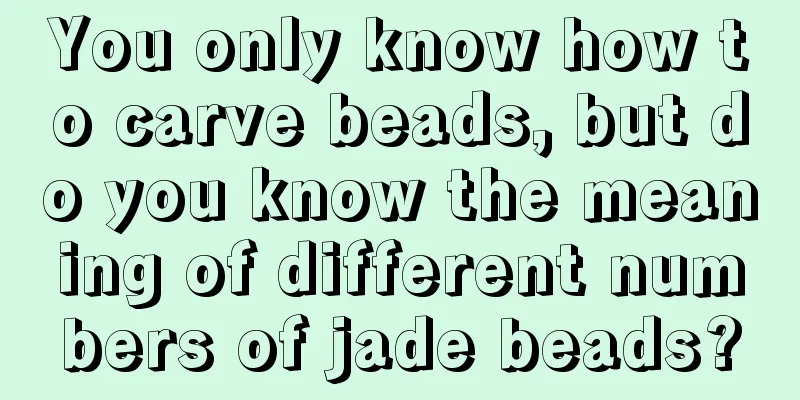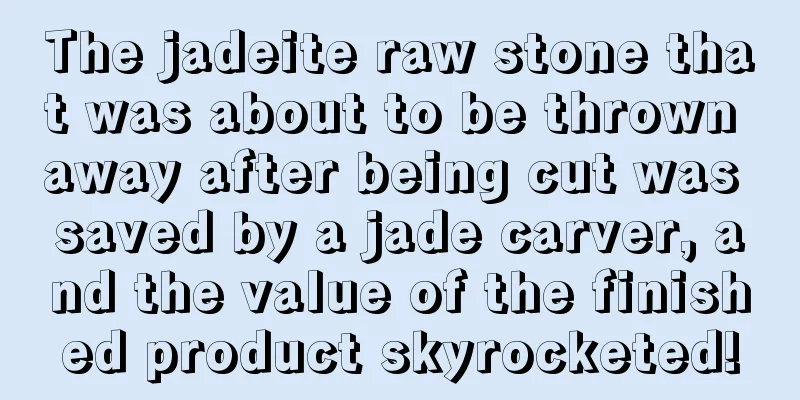Jade professional knowledge: "Jade Luster"

|
Jade is a jade stone with a polycrystalline interwoven structure. Simply put, it is a collection of countless translucent mirrors with their own reflective properties. The "mirrors" of jade not only reflect each other, but also shoot at each other. These optical reactions constitute what we often call the gloss of jade. In the jargon of the jade industry, the best quality light performances are fluorescent light, oily light and rigid light, followed by glass light and then waxy light. The worse performance is stone light. The luster of jade is actually a normal optical phenomenon. The micro-crystals inside the jade are arranged neatly and orderly, causing the overall refractive index to become more obvious after light enters the jade. Jade with a fluorescent feeling can give people the feeling that the jade is brighter than its surroundings at any angle. Theoretically speaking, all jadeite of the glutinous grade and above may exhibit the fluorescence phenomenon, and the closer the shape of the jadeite is to a perfect circle, the more obvious the fluorescence effect will be. This is also one of the reasons why carvers try to make spherical objects and figures as round as possible in finished jade products. Oily sheen means that visually, we can see that the jade seems to have been brushed with oil. This requires the jade crystals to be quite fine. When light enters jade, the same beam of light is decomposed into many rays of uniform size that gradually diffuse. They are evenly distributed on the surface of jade crystals, ensuring the transparency of the jade while also reflecting the shape of the light when it shines on a single crystal. Rigid light represents the extraordinary transparency and reflective ability of jadeite crystals. In the jade market, we often hear the terms "full of hardness, having a strong flavor, and having hardness", which refer to this ability. Vitreous luster is a light characteristic possessed by most jade products. Jadeite with a glassy luster usually has crystals of average quality and a relatively tight arrangement. As for the waxy luster and stone luster, they usually appear on inferior jadeite. The main problem with jadeite of poor quality is that the crystals are loose, the quality is tender, and the light transmission effect is poor. No matter how good the water head of the jadeite is, it will have a loose visual effect. This is wax light. Stone luster, as the name suggests, means that jade is like stone and its luster is not strong. After polishing, jadeite with this kind of glossiness will hardly have the transparency of other types of jadeite. It lacks spirituality and looks like a piece of stone.
fcgc33 fcpf18 |
<<: Jade Guanyin, this is the correct way to choose
Recommend
Teach you how to distinguish B and C grade jadeite
I wonder if you have any questions at this point....
The pictures and text will teach you how to identify the A-grade and B-grade jadeite. It is very easy to learn. Come and learn if you don’t want to be fooled.
The so-called B-grade jadeite refers to natural j...
The meaning of jade jewelry, what kind of blessing do you want to find out for yourself
In the past few days, I have sorted out a batch o...
The “three-look” technique for jadeite will teach you how to distinguish the quality of jadeite!
Jade is loved by more and more people for its nob...
How well do jade and cheongsam match? Perfect match!
The beauty of cheongsam transcends time and is a ...
Oriental Culture in Jade Bracelets
A bracelet, also known as a "bracelet",...
How to choose high-quality jadeite if you don't understand the "thick pile", "strange pile" and "normal pile" of jadeite?
When buying jade, if you know some jargon and lis...
Why does jade need to be inlaid?
Jade inlays are mainly used in jewelry. In our da...
The beauty of jadeite inlay
Any classic must meet the needs of modern people ...
After reading these 6 points, if you still don’t know how to choose jade egg-shaped noodles, come to me
We know that an ordinary plain bracelet is often ...
Are there any tips for selecting green jadeite rough stones? Let’s learn together!
As the price of jade rough materials increases, t...
Beautified jadeite, make sure you see it before buying it
Everyone's first impression of jade is visual...
What should you look for when choosing a jadeite piece that will appreciate in value?
From ancient times to the present, jade has alway...
Is the jade you bought fake? An article teaches you how to judge the authenticity of jade at home
Generally, jade is divided into three grades: A, ...
There are so many things to pay attention to when using jadeite Pixiu. If you make a mistake, you won’t be able to attract wealth.
Pixiu is one of the sacred beasts in Feng Shui. T...









